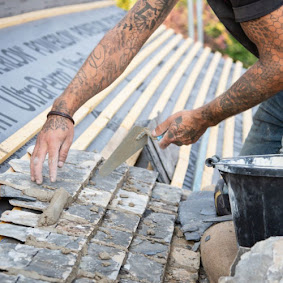A Roof Over Time: The Evolution of Heritage Roofing Styles
Roofing has always served more than as a mere utilitarian function of architecture. Rather, it serves as a cultural canvas, artistry, and innovation. In heritage roofs, the styles and techniques that have moulded buildings through the ages stand as testaments to these trends. From stone's durability to the intricate beauty of thatch, heritage roofing styles tell tales of tradition, adaptation, and artistry.
As specialists in heritage roofing, GBR Roofing and our trusted Collyweston roofing specialist team are passionate about preserving these stories. Here, we’ll explore the evolution of heritage roofing styles and the role they play in architectural history.
The Origins of Roofing Traditions
The earliest forms of roofs were simple and created from readily available materials for the immediate need for shelter. Gradually, the basic forms were developed into more advanced designs with changes in geography, climate, and societal development. Some of the earliest examples of heritage roofs are thatch, turf, and wooden shingles. Though crude by today's standards, they served their purposes and were effective insulators.
Thatch Roofing
One of the oldest materials to be used in roofing was thatch. Being abundant and possessing good insulating qualities, thatch was highly used throughout Europe. Areas that were rich in reeds or straw perfected the art and continued passing it on through generations. Thatch roofing remains a testament to its natural appeal and environmental friendly nature.
Wood shingles
Along forested tracks, wood shingles were sensible. Skilled craftsmen broke wood logs into small, uniform lengths that made firm and attractive roof covers. Medieval buildings are nowadays identified with that style, found in heritage sites.
The Evolution of Stone and Slate
As societies moved forward, the roofing materials did also. Stone and slate became highly popular as solid and fire-proof substitutes for natural materials. A style that most is familiar with in the UK is Collyweston, which is so named after slates from quarries in Northamptonshire of limestone. Their slates were prized for long durability and typical weathered looks.
Collyweston Roofing
The art of working with Collyweston slate dates back at least to the 13th century. The material's unique characteristics—lightweight yet strong—made it ideal for heritage buildings, from cottages to grand estates. As a trusted Collyweston roofing specialist, GBR Roofing ensures these time-honored techniques are preserved, using traditional tools and methods to maintain the authenticity of heritage structures.
Slate Roofing
Beyond the Collyweston, there was a prevalence of slate being used because they were readily available in areas, such as Wales. Its use in heritage design was largely aided by its attractiveness and durability over time. A slate roof denotes a change of direction toward designing roofs that also have aesthetic as well as more functional appeal.
Heritage roofs are more than an architectural feature-they are cultural landmarks. Each tile, slate, or shingle tells a story of the people who lived beneath it and the craftsmen who built it. Preserving these structures is a responsibility GBR Roofing embraces wholeheartedly. By honoring these traditional methods and materials, we help keep such legacies alive for future generations.
Conclusion
For over decades, GBR Roofing has been offering heritage roofing with restoration and conservation. Our technical expertise combined with a deep respect for history guarantees that your heritage roof remains the hallmark of timeless craftsmanship.

.jpg)


Comments
Post a Comment